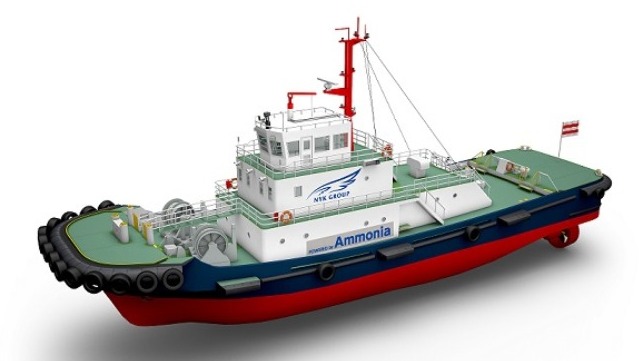R&D Project to Design World’s First Ammonia-Fueled Commercial Tugboat

An R&D project is being launched to develop the world’s first ammonia-fueled commercial tugboat. The project, which will be undertaken in Japan, is the latest effort to develop what is widely viewed as the next generation of marine fuel systems. The introduction of ammonia for marine fuel is highly expected as a practical solution for decarbonization in the shipping sector.
The interest in ammonia comes from the fact that it does not produce harmful greenhouse gasses when burned. Unlike the current fuel sources in use, when ammonia carbon dioxide is burned it does not discharge CO2. In addition, there is a method of production of ammonia from hydrogen that produces ammonia without CO2 that is expected to become an energy source. The ability to become emissions-free is seen as the potential solution to achieve the International Maritime Organization’s goal of cutting the international shipping industry’s GHG emissions in half by 2050 and ultimately achieving zero emissions.
Citing the potential for emission-free operations, Japan’s Nippon Yusen Kaisha, IHI Motor Co., and Nippon Kaiji Kyokai announced that they have signed a joint R&D agreement for the commercialization of an ammonia fuel tugboat. According to the companies, they will proceed with research and development from both technical and operational perspectives regarding the introduction of ammonia as a marine fuel for tugs.
Nippon Yusen with be responsible for the research and design of the hull and fuel supply system while IHI will undertake the R&D of engines and exhaust gas after treatment. The Japan Maritime Association, ClassNK, will provide a safety assessment. The joint project envisions the implementation of ammonia marine fuel in a tugboat that requires high output and will consolidate the technological and operational requirements necessary for that purpose.
For the remainder of this year, they will focus on elements including the technological development for the hull, engines, and fuel supply systems, as well as the development of safe and secure navigation methods. After that, based on the evaluation of their results, they anticipate starting the study for the construction of the ammonia fuel tugboat.
The companies acknowledge that the efforts still need to prove that it is possible to commercialize marine equipment that uses ammonia and establish a method for operating this vessel, but they believe that their R&D will contribute to the decarbonization of international shipping.
They will also be drawing on their previous experience in developing Japan's first liquefied natural gas (LNG) fuel ship. In 2015, they completed the tugboat Sakigake, Japan's first LNG fueled tugboat which was built at Keihin Dock Co. and equipped with a dual-fuel engine capable of using both LNG and heavy oil developed by IHI Engine. Today, it is owned by NYK and operated by Shin Nihon Kaiyaku Co. in Yokohama and Kawasaki. NYK believes that it will be able to use the experience it gained in the development and operation of the Sakigake to verify the operational methods of the envisioned ammonia fuel tugboat.
